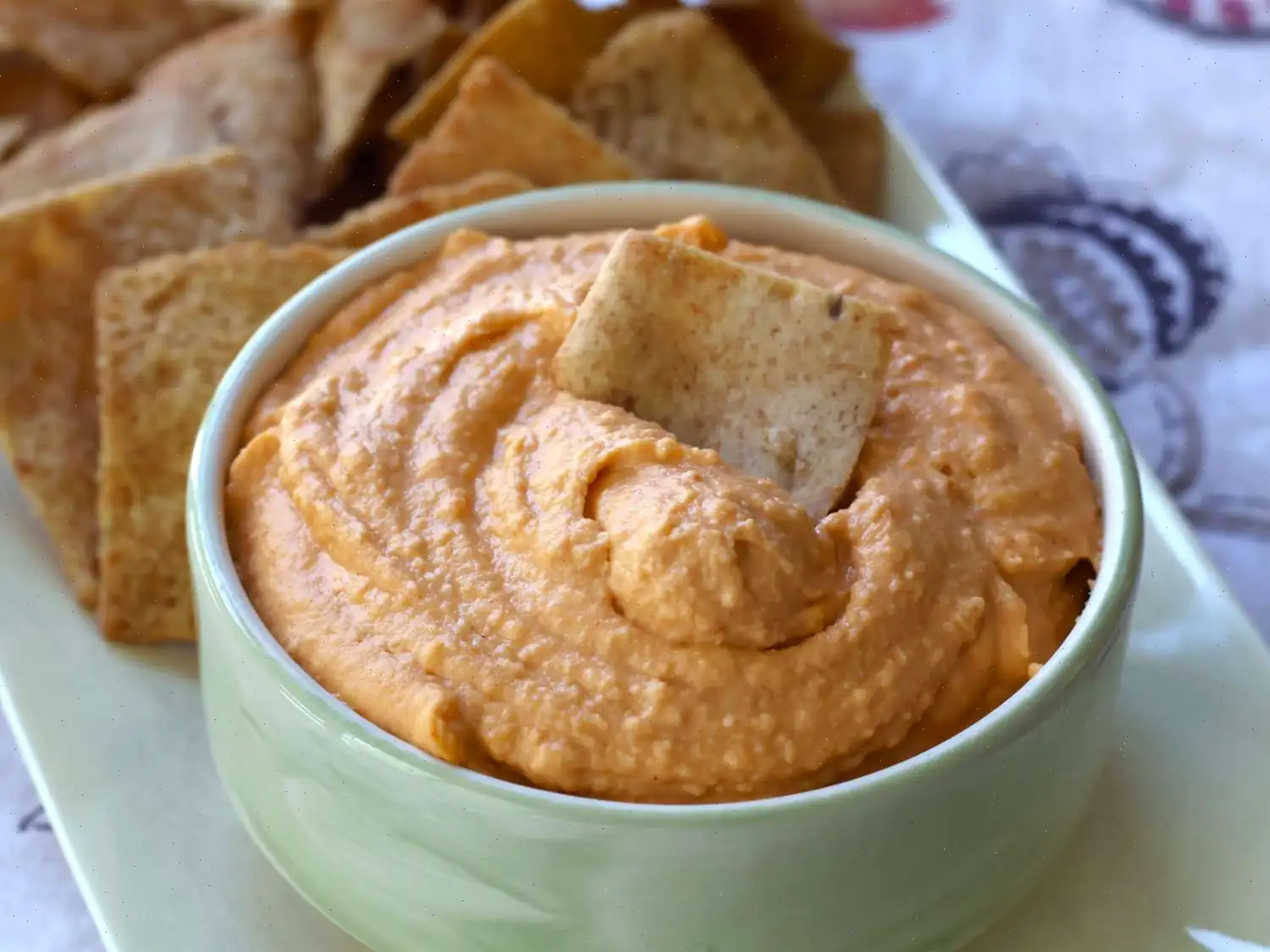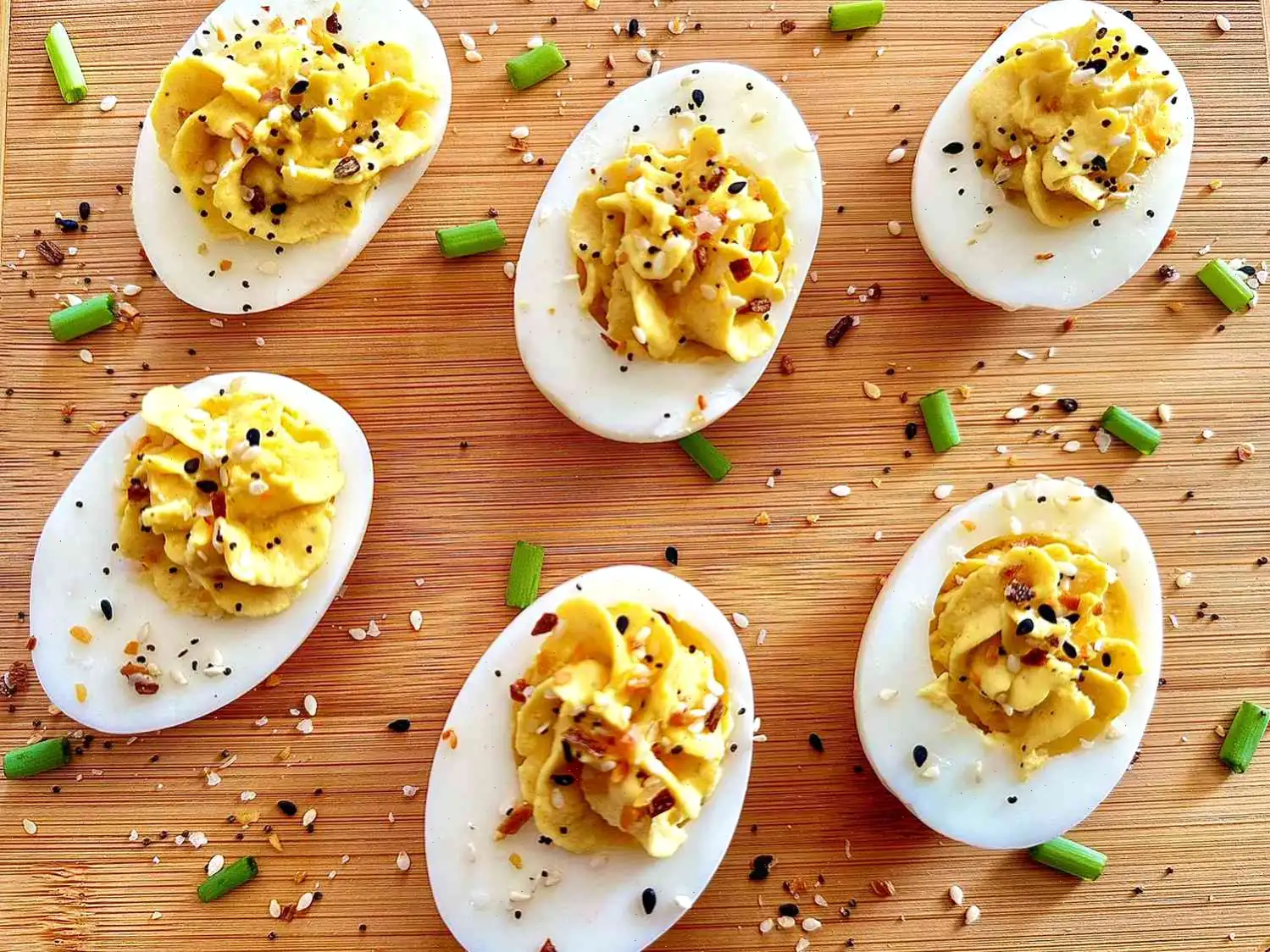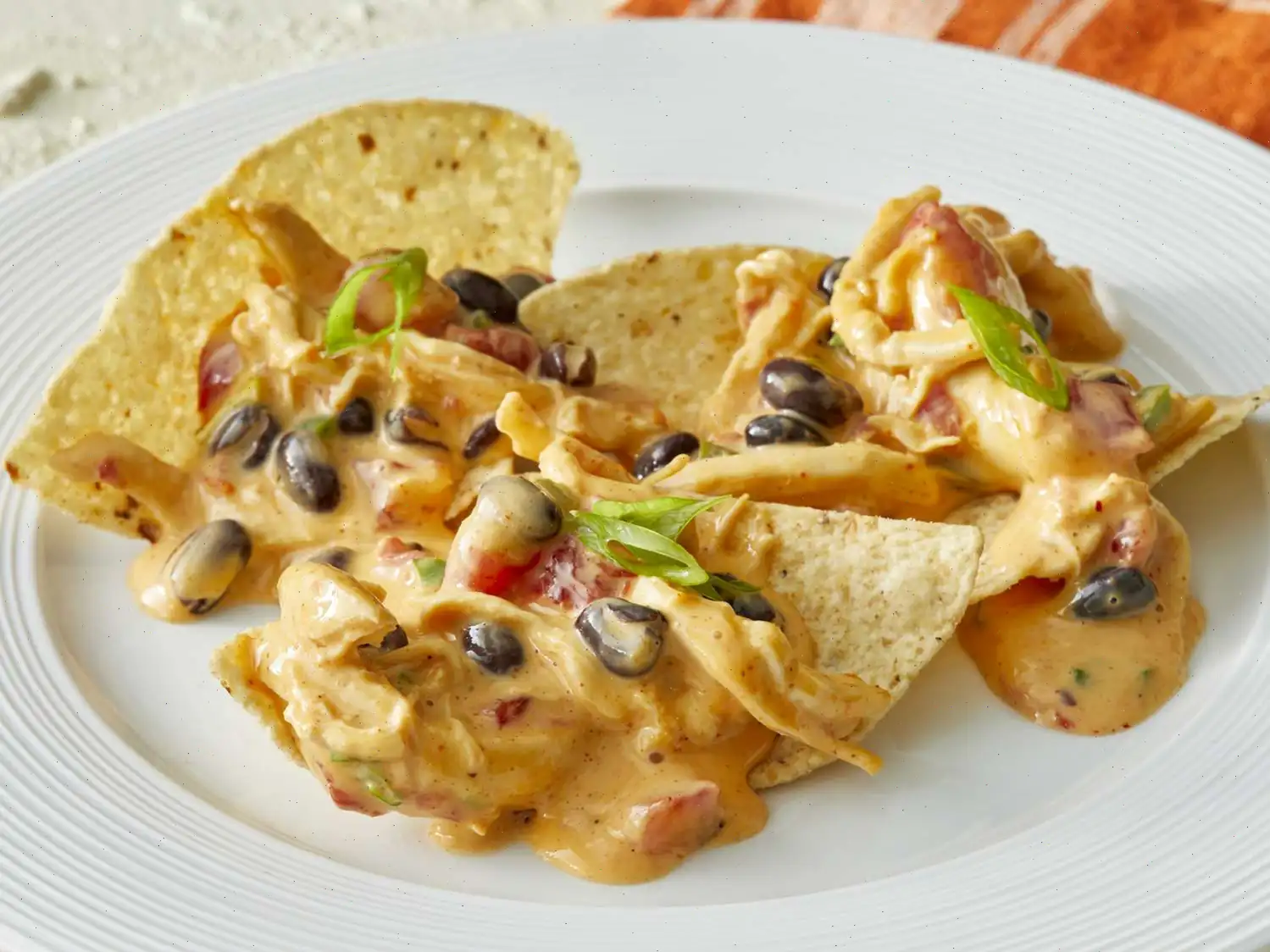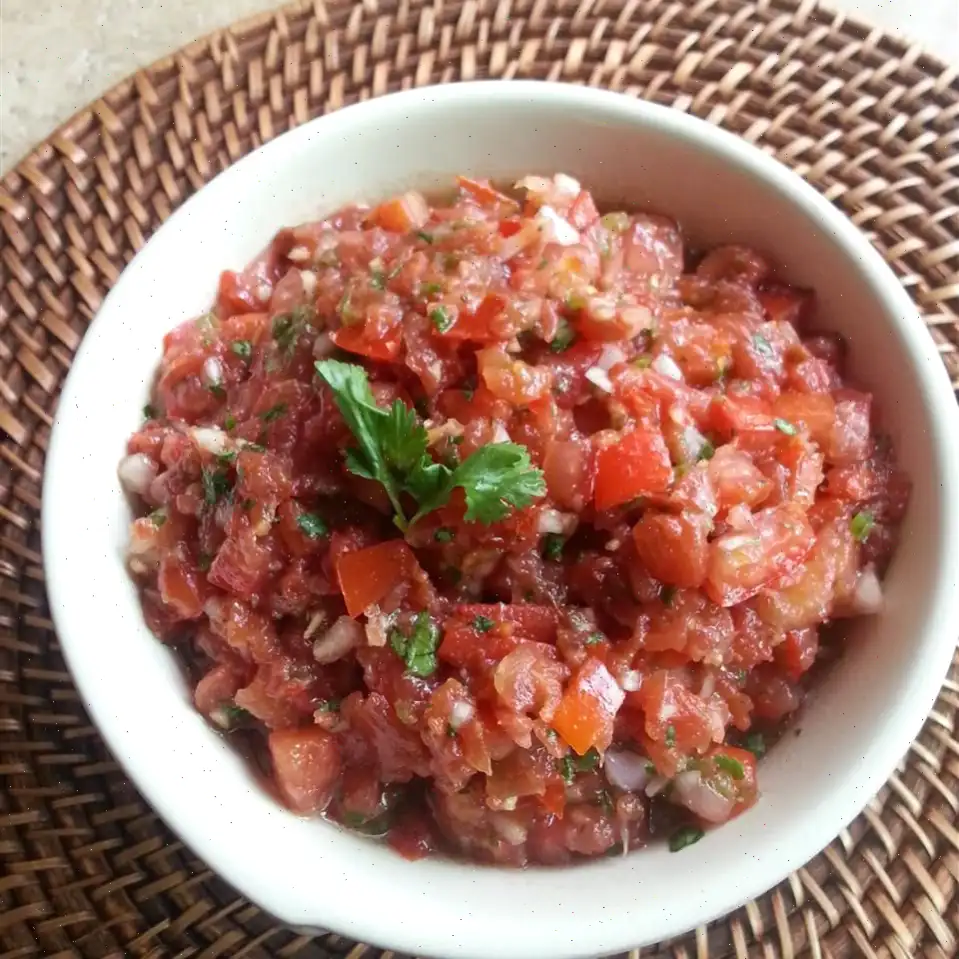
Gochujang Hummus Recipe
This creamy, spicy chickpea dip is a perfect blend of savory, tangy, and a bit of heat. Easy to make and packed with flavor, its a great addition to any meal or as a snack on its own. Heres how you can make it!
Ingredients
- 15 ounces can chickpeas, drained (reserve liquid)
- 2 tablespoons tahini
- 2 tablespoons olive oil
- 1 tablespoon gochujang (adjust to taste)
- 1 tablespoon lemon juice
- 1 clove garlic, minced
- 1/2 teaspoon salt
Directions
- In a food processor, combine chickpeas, tahini, olive oil, gochujang, lemon juice, minced garlic, and salt.
- Pulse the mixture until it is coarsely blended, scraping down the sides of the processor as needed.
- With the processor running, slowly stream in the reserved chickpea liquid until the desired consistency is reached.
- Taste and adjust the seasoning if necessary, adding more gochujang or salt if desired.
- Transfer the dip to a bowl and serve. Enjoy with pita, crackers, or fresh veggies!
Nutrition Facts (Per Serving)
| Nutrition | Amount |
|---|---|
| Calories | 178 |
| Total Fat | 9g |
| Saturated Fat | 1g |
| Cholesterol | 0mg |
| Sodium | 502mg |
| Total Carbohydrates | 20g |
| Dietary Fiber | 5g |
| Total Sugars | 4g |
| Protein | 6g |
| Vitamin C | 1mg |
| Calcium | 41mg |
| Iron | 1mg |
| Potassium | 120mg |
* Percent Daily Values are based on a 2,000 calorie diet. Your daily values may be higher or lower depending on your calorie needs.
** Nutrient information is based on available data. If you're following a medically restrictive diet, consult a doctor or registered dietitian before preparing this recipe.
The History and Cultural Significance of Gochujang Hummus
Gochujang Hummus is a modern fusion dish that brings together the rich culinary traditions of the Middle East and Korea. Traditional hummus has been a staple in Middle Eastern cuisine for centuries, with its roots tracing back to ancient Levantine civilizations where chickpeas were widely cultivated. The creamy, nutty texture of hummus, combined with tahini, olive oil, and lemon juice, created a versatile dip that could be enjoyed with bread, vegetables, or meats. The addition of gochujang, a fermented Korean chili paste, represents a contemporary twist that reflects the global interest in cross-cultural flavors, marrying the warmth and spice of Korean cuisine with the familiar comfort of hummus.
Regional Variations and Influences
While traditional hummus is widespread across Lebanon, Israel, and Palestine, the incorporation of gochujang brings a distinctly Korean influence to the dish. In Korea, gochujang is a culinary cornerstone used in stews, marinades, and sauces. By blending it into hummus, chefs and home cooks alike create a unique, umami-rich dip that balances sweetness, saltiness, and heat. This fusion version is particularly popular in cosmopolitan cities and regions where Middle Eastern and Korean cuisines coexist, including Los Angeles, New York, and Seoul, where food enthusiasts enjoy experimenting with hybrid flavors.
What Sets Gochujang Hummus Apart from Similar Dishes
Unlike classic hummus or other spicy variations that rely on cayenne or paprika, Gochujang Hummus introduces the complex depth of fermented chili paste. The fermentation process gives gochujang a subtle tang and savory undertone that enhances the chickpeas without overpowering them. Compared to sriracha hummus or harissa hummus, the Korean chili paste adds a distinctive umami note, creating a flavor profile that is both robust and layered. The resulting dip is creamier, slightly sweeter, and spicier, making it a standout option for those looking for a bold yet balanced appetizer.
Common Settings for Serving Gochujang Hummus
Gochujang Hummus is versatile and can be served in a variety of settings. It works beautifully as an appetizer at dinner parties, a flavorful accompaniment to vegetable platters, or a unique spread for sandwiches and wraps. Many modern restaurants and fusion cafes serve it alongside pita chips, grilled meats, or fresh greens. Its visual appeal, with a rich reddish hue from the gochujang, makes it an attractive centerpiece for entertaining guests, offering both flavor and aesthetic charm.
Interesting Facts and Culinary Insights
One fascinating aspect of Gochujang Hummus is its ability to bridge culinary traditions. Fermentation, a process that goes back thousands of years in Korea, not only develops the signature taste of gochujang but also enhances its nutritional benefits, including probiotics that support gut health. Another interesting note is that this fusion dip exemplifies the global trend of Korean-inspired foods entering mainstream cuisine, demonstrating how traditional ingredients can be adapted to new contexts. Additionally, many chefs experiment with toppings like toasted sesame seeds, scallions, or roasted chickpeas to add texture and visual interest, further elevating the experience of this unique dish.








